
A low temperature anaerobic digestion process for manure management developed by researchers at Agriculture and Agri-Food Canada (AAFC) and commercialized by a Canadian company called Bio-Terre Systems Inc. is extending its market reach as a result of a partnership with an American company, Revolution Energy Solutions (RES), headquartered in Washington, DC.
A low temperature anaerobic digestion process for manure management developed by researchers at Agriculture and Agri-Food Canada (AAFC) and commercialized by a Canadian company called Bio-Terre Systems Inc. is extending its market reach as a result of a partnership with an American company, Revolution Energy Solutions (RES), headquartered in Washington, DC.
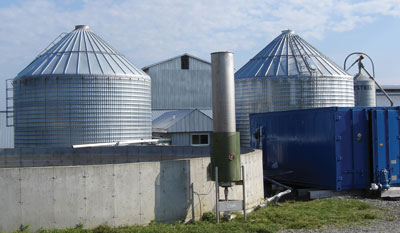
|
| The Bio-Terre Systems anaerobic digesters on two hog farms in Quebec are above ground installations. Submitted photos
|
According to Bio-Terre’s chief operating officer, Elise Villeneuve, the company is leveraging its knowledge and the performance of its technology on two hog farms in Quebec and one in Manitoba to present the agriculture industry with what it believes is a type of anaerobic digestion that is comparable in biogas production, more affordable, scaleable depending on the size of an operation, and generally easier to use compared to other higher temperature technologies currently in the marketplace.
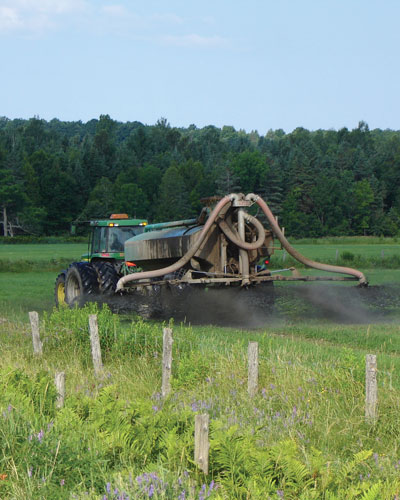 |
|
| The Bio-Terre Systems vessel at a Manitoba hog farm is below ground with a floating membrane to capture biogas. |
|
 |
|
| Bio-Terre Systems chief operating officer and civil engineer Elise Villeneuve. |
|
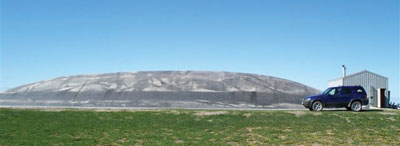 |
|
| The nutrient-rich, liquid byproduct produced from Bio-Terre Systems’ anaerobic digesters makes excellent organic fertilizer. |
|
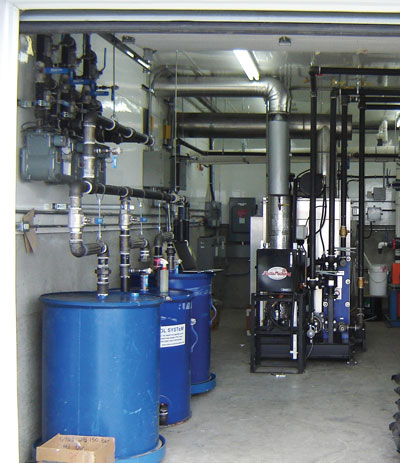 |
|
| Bio-Terre’s engineering partners have spent more than a decade fine-tuning their low temperature anaerobic digestion technology to ensure it works as advertised. |
|
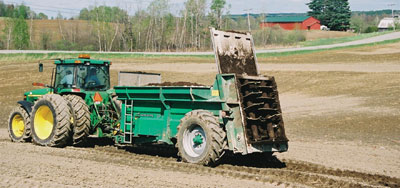 |
|
| The accumulated treated solids produced from Bio-Terre Systems’ anaerobic digesters work well as organic fertilizer or animal bedding. Advertisement
|
The Bio-Terre system operates in the 20 to 25 Celsius range versus other types of anaerobic digestion systems, specifically mesophilic and thermophilic processes that operate at about 35 Celsius and 55 Celsius respectively.
There is considerable brainpower behind Bio-Terre’s patented technology, originally developed in the mid-1990s by AAFC research scientist Dr. Daniel Masse and the University of Ottawa. In 1998, three engineering firms – DGH Engineering, Groupe S.M. Inc. and Tecknika – recognized its potential. They incorporated Bio-Terre with the intent of commercializing Dr. Masse’s work. Over the past decade, they established three successful installations on hog farms.
“Each of the installations had something a little bit different that they (Bio-Terre engineers) were testing to verify the best approach,” says Villeneuve. “They are all working very well, so they are all good approaches. Being senior engineers, they were being very prudent and wanted to make sure before they commercialized anything.”
For example, while the digester vessels in Quebec are above ground silos, the digester in Manitoba is in the form of a below ground lagoon with a floating bag to capture the biogas.
Now, the company hopes that its partnership with RES will take commercialization to the next step.
“They have done a thorough due diligence on our system and have decided to choose our system to deploy their program on hog and dairy farms in the U.S.,” says Villeneuve. “It will be completely automated and monitored, and the program is to deploy many of these systems in the next couple of years.”
RES systems will be designed with power production from the biogas in mind, including negotiation of sales contracts. The plan at present is for RES to own and operate the systems, with the farmer’s only responsibility being to supply the manure.
Dr. Masse continues to work with Bio-Terre to fine-tune the original technology developed in his lab that still represents the core of the system. Villeneuve herself is a civil engineer and an MBA who has worked in the wastewater industry for the past 15 years, most recently with the agriculture industry and manure treatment.
She says the Bio-Terre technology continues to be unique because she knows of no one else successfully offering an anaerobic digestion system in this very low temperature range.
Among the unique features of this technology is that it is essentially a scalable, two vessel, two-stage technology where the manure spends half the time digesting in stage one and half the time in stage two. As is typical with all anaerobic digestion systems, the by-products are biogas, a liquid stream and a solid stream, with the Bio-Terre system collecting a percentage of biogas from both vessels. The biogas can then be used as fuel to generate heat, produce electricity or both.
The main thrust behind developing the Bio-Terre technology initially was purely for better manure management on intensive farming operations like large hog and dairy farms, which were producing more manure with high concentrations of phosphorus than there was available land for spreading. Through anaerobic digestion, researchers found they were able to remove about 50 percent of the phosphorus quite easily, and odor from raw manure spread on farmland was no longer an issue. As research advanced further and alternative energy garnered greater public interest over the past decade, other benefits of the anaerobic digestion process, such as production of biogas and the use of by-products as sources of organic fertilizer and bedding, rose to greater prominence.
“Something that we discovered later – and we have studies to prove this – is that after digestion, the manure that you spread is an enhanced fertilizer that has a much better effect on crop production,” says Villeneuve. “What is also becoming an important aspect is the biogas for energy. Being in cold climates, our farms need to be heated in winter as it is for the northern United States. By capturing the biogas and using it to heat boilers as a heating system for the farm, there is a huge amount of energy savings.”
The challenge facing researchers was to develop a very stable, lower temperature anaerobic digestion system without compromising biogas production.
Villeneuve says an anaerobic digester operating at a lower temperature is a more stable system because the bacteria are more robust and there is a larger diversity of microorganisms. Ammonia also acts as less of an inhibitor within lower temperature systems. She says that what Bio-Terre has set out to break is the paradigm that lower temperature equates to lower biogas production. How they have done is to combine lower temperature with what they call the, ‘batch sequential approach.’
Taking a seven-day cycle as an example, what happens with the Bio-Terre approach is that raw liquid manure is pumped into the first vessel for 3.5 days. After 3.5 days, the vessel will be full based on its design, and the raw liquid manure will then be pumped into a second vessel for the remaining 3.5 days. While the raw manure is being pumped into the second vessel, anaerobic digestion continues to occur and a high proportion of solids are settling in the first vessel. After seven days, the digested liquid manure from the first vessel is discharged and typically transferred to a lagoon, and the pumping of raw manure switches once again from the second to the first vessel. Now the solids in the second vessel are allowed to settle. By allowing the solids to settle in each vessel, bacteria work to digest that material over a longer period of time. Biogas is captured continuously from both vessels, and the vessels are equipped with an automated purge system so that the accumulated solids in each vessel can be removed from time to time as needed.
“By using this approach, this is how we are able to give all the time required for the bacteria to still work at lower temperature,” says Villeneuve. “This is how we are cheating. We are able to create a very long retention time without creating a very long hydraulic (liquid) retention time.”
Typically, lower temperature equates to longer retention time, which requires something like a large lagoon being treated all at once to capture a reasonable amount of biogas. Large lagoons are expensive to build.
“What we are doing is that instead of having a very large system, we create an environment where we can keep the untreated solids in and discharge what has already been treated,” says Villeneuve. “This is the sequential batch approach. We are creating an environment where the bacteria have a lot of time to do their work so that we can maximize the production of biogas.”
The system can be designed to reflect the volume and frequency that farms need to pump the raw manure from their receiving pits into the digester. Retention time will also vary according to the volume and concentration of manure being digested.
In terms of a minimum farm size when an installation of the Bio-Terre system would make sense, Villeneuve says it would depend on whether or not a farm wishes to use all or a portion of the biogas to produce electricity. It’s possible to use the system as a manure management method and simply creating biogas that is used to produce heat. However, if a farm decides to use a portion or all of the biogas to produce electricity, then a minimum size is necessary to make it worthwhile financially, considering the extra equipment required to process the biogas, installation of a power generator, electrical tie-in equipment, as well as negotiating supply agreements with local power purchasers.
In terms of the installation costs, Villeneuve says it really needs to be studied on a case-by-case basis, but the smallest farm where Bio-Terre installed its system cost about $700,000 (Cdn) a few years ago with everything included. Costs will vary because the system is scaleable depending on the size of the farm.
Right now, given the company’s new partnership with RES, the marketing thrust is aimed at dairy farms in the 1,000-head range as well as hog operations in the U.S., although the company would consider smaller installations. Bio-Terre Systems will still market the technology in Canada. Again, the cost and size of an installation will depend a lot on whether or not the farm intends to use the biogas to produce electricity, as well as the manure concentration and volume.
A market niche the company is targeting is intensive farm operations with highly diluted manure. Villenueve says with higher temperature systems, because there is so much liquid to heat on farms with highly diluted manure, there is more energy needed to actually make anaerobic digestion work than is being produced.
“I believe this is a place where only a lower temperature system will be able to achieve a positive energy balance and I think that is one of the other reasons why our system was chosen by RES for this program,” she says.